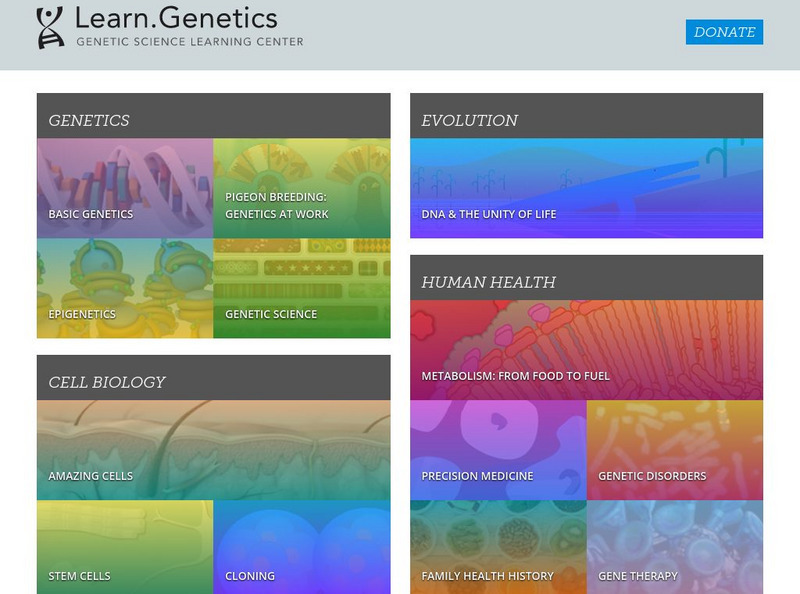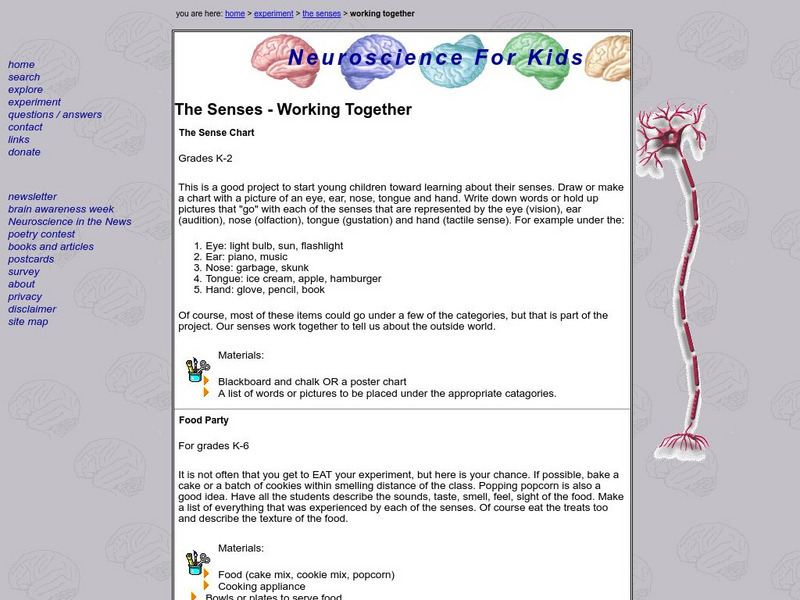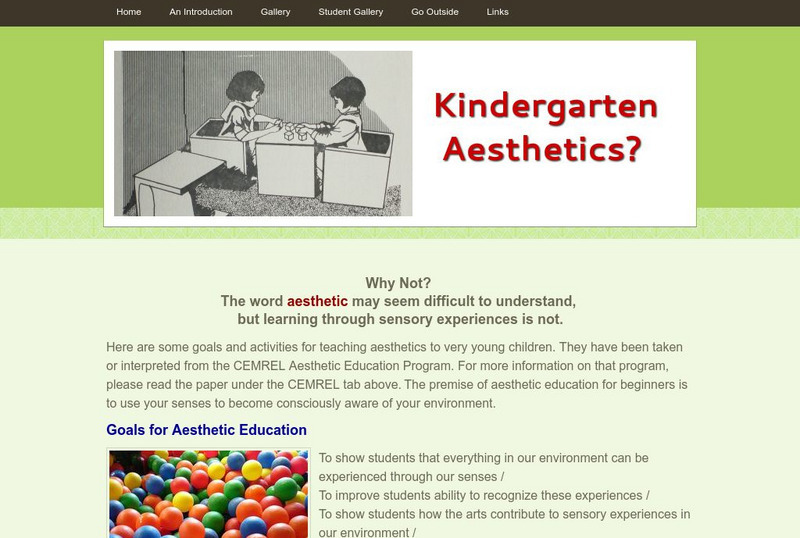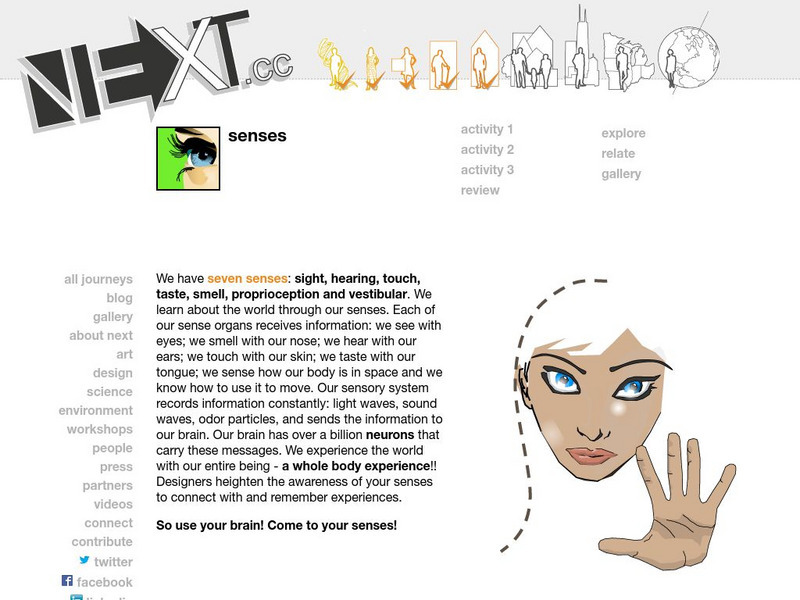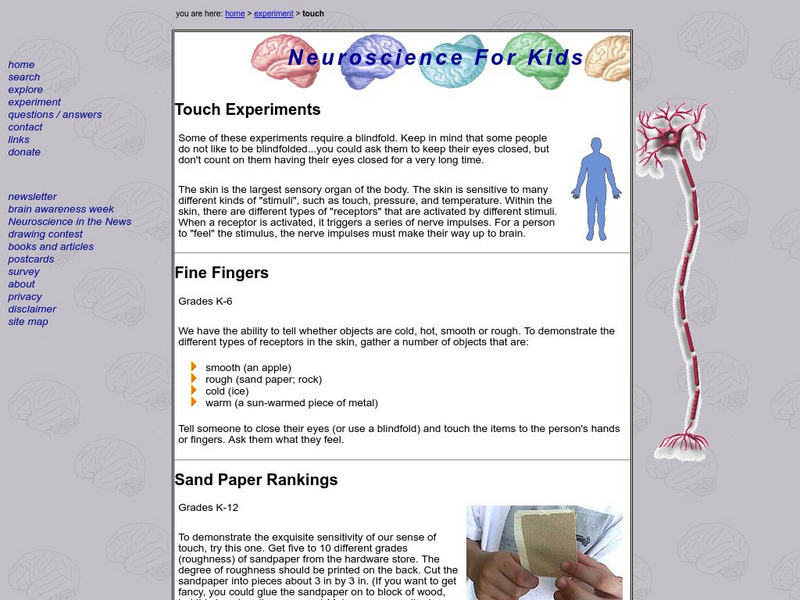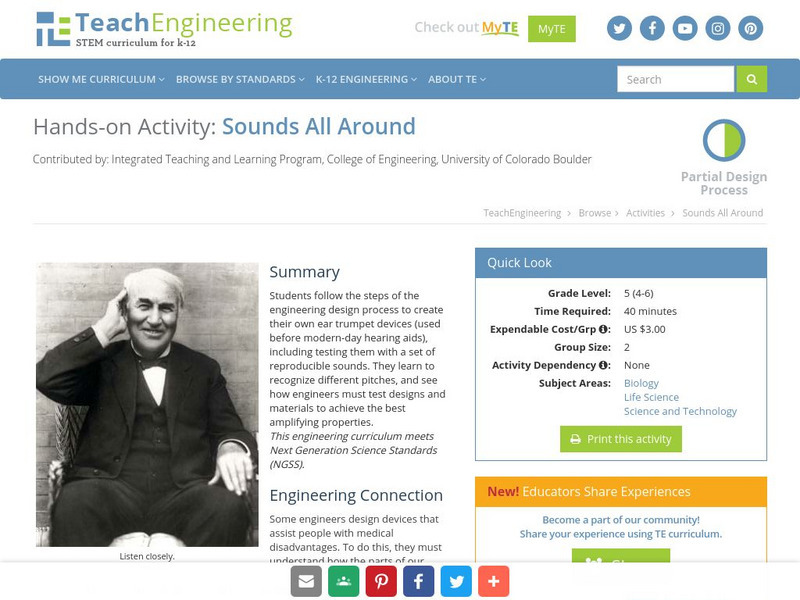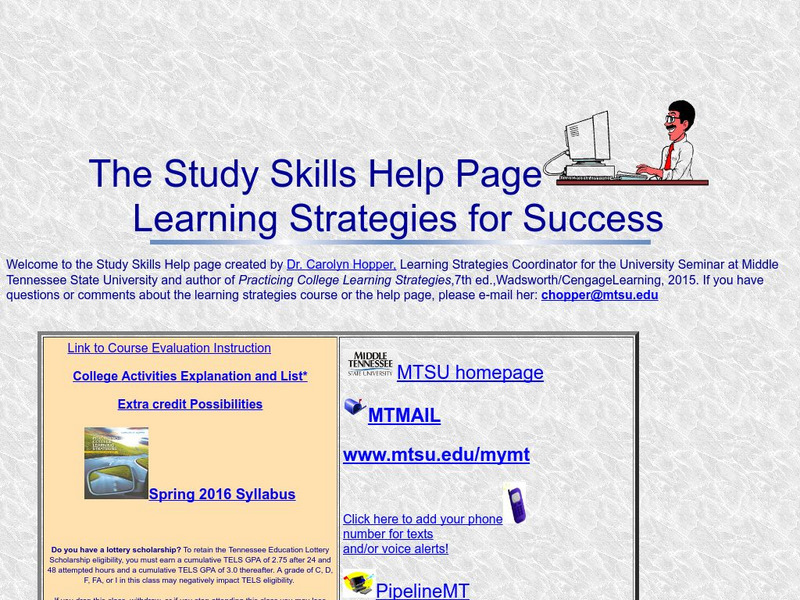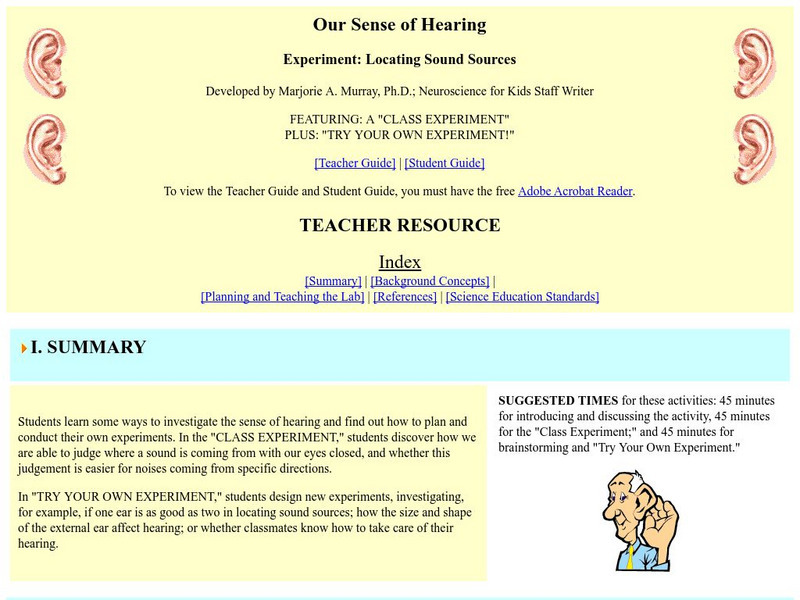University of Utah
University of Utah: Genetic Science Learning Center: The Basics and Beyond
This website offers a clear definition of the science of Genetics, highlighting DNA and genes. There is a neat, easy-to-understand animated tour of the basics and an opportunity to go inside an animated cell. Student can build a DNA...
National Cancer Institute at the National Institutes of Health
Seer Training Modules: Introduction to the Nervous System
Self-guided learning activity where students learn about the structure and function of the human nervous system. There is a short quiz at the end of the lesson to check for understanding.
Other
Kid Sense: Strength and Endurance
Strength and endurance are important to enable children to perform every day functions such as fine motor skills, gross motor skills, playground skills, and sporting skills. This article explains how to tell if your child has problems...
TeachEngineering
Teach Engineering: How Do Sensors Work?
Through six lesson/activity sets, students learn about the functioning of sensors, both human and robotic
TeachEngineering
Teach Engineering: What Is a Sensor?
Learners gain a rigorous background in the primary human sensors, as preparation for comparing them to some electronic equivalents in the associated activity.
Mind My Education
Mind My Education: The Life of Environments
This extensive lesson plan covers various topics about how animals interact with their environment. Topics include how animals sense their environment, how environments and organisms change together, and how animals use their senses to...
University of Washington
University of Washington: The Senses Working Together
This website is dedicated to the "Senses working together." Learn how to play the sensory concentration game at this website and create a sense chart.
Other
Kindergarten Aesthetics?
The word aesthetic may seem difficult to understand, but learning through sensory experiences is not. Here are some goals and activities for teaching aesthetics to very young children.
Next.cc
Next: Senses
Investigate your sensory system by engaging in the activities provided. Includes links to explore related sites pertaining to senses.
University of Washington
The Senses
This site has a collection of learning activities, games, experiments, and lesson plans on the five senses. Organized by grade level and topic, this site is packed with an assortment of interactive and engaging activities, that would...
University of Washington
University of Washington: The Senses Touch
Do you know what the largest sensory organ of the body is? Use this site on skin and its sense of touch to learn more.
Alabama Learning Exchange
Alex: Wordly Wise
Students will learn how to use better word choices by completing a cloze activity, listening to A House for Hermit Crab by Eric Carle, and completing a word web.
John F. Kennedy Center
The Kennedy Center: Oceans: A Sensory Haiku
In this lesson plan, students use the ocean and their five senses as inspirations to create their own unique haikus. Lesson provides assessment criteria and a list of sources.
Alabama Learning Exchange
Alex: Gummy Worm Writing
This activity is designed to introduce descriptive writing. It can be used in grades 3-5. [Requires Adobe Reader.]
Treehut
Suzy's World: Touch
At this site find out how you can feel hot and cold and try this experiment using your sensory nerves.
SEDL
Sedl: Five Senses
Elementary students will gain great insight into the workings of our five senses through this collection of detailed, integrated lesson plans for grades K-3. Each lesson contains a list of needed materials, hands-on explorations...
TeachEngineering
Teach Engineering: Sounds All Around
Students follow the steps of the engineering design process to create their own ear trumpet devices (used before modern-day hearing aids), including testing them with a set of reproducible sounds. They learn to recognize different...
TeachEngineering
Teach Engineering: Biomedical Engineering and the Human Body
Human beings are fascinating and complex living organisms-a symphony of different functional systems working in concert. Through a 10-lesson series with hands-on activities students are introduced to seven systems of the human...
TeachEngineering
Teach Engineering: Our Bodies Have Computers and Sensors
Students learn about the human body's system components, specifically its sensory systems, nervous system and brain, while comparing them to robot system components, such as sensors and computers. The unit's life sciences-to-engineering...
TeachEngineering
Teach Engineering: Human and Robot Sensors
Learners are provided with a rigorous background in human "sensors" (including information on the main five senses, sensor anatomies, and nervous system process) and their engineering equivalents, setting the stage for three associated...
Other
Tennessee State University: The Study Skills Help Page
The Study Skills Help Page provides learning strategies for success. Explore the learning tools and tips that you can use to become a more skilled learner.
Alabama Learning Exchange
Alex: Cool Kool Aid Experiment
Seventh grade middle schoolers have had wide-ranging experiences with fractions and operations on fractions, but ratios and rates may be new concepts for them. This activity introduces students to the idea of rates via a familiar and...
Understood For All
Understood.org: Trouble With Self Regulation: What You Need to Know
Self-regulation skills develop gradually, and there are ways to help your child improve. This article discusses working on self-awareness, impulse control, and goal-setting to help your child learn to self-regulate.
University of Washington
Our Sense of Hearing Experiment: Locating Sound Sources
Have you ever wondered how your ear works? This website will provide you with knowledge on how to locate sound sources among other ear information.
Other popular searches
- 5 Sensory Activities
- Sensory Activities Preschool
- Multi Sensory Activities
- Autism Sensory Activities
- Sensory Activities Easter
- Sensory Activities Sen
- Multi Sensory Activities
- Miltie Sensory Activities


